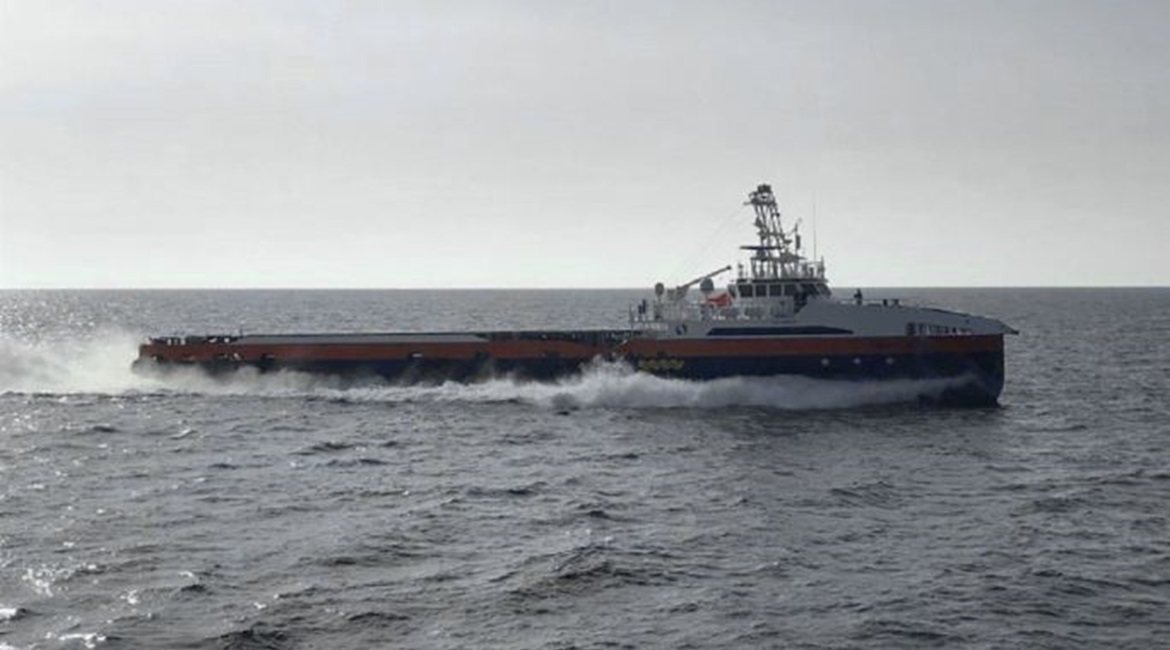
An experimental Ghost Fleet Overlord unmanned surface vehicle (USV) has participated in a major amphibious exercise on the US Pacific coast, having previously transited over 4,700 n miles almost entirely autonomously.
Developed under a partnership between the US Department of Defense (DoD) and the US Navy (USN) through the Office of the Secretary of Defense’s Strategic Capabilities Office (SCO), the Overlord initiative is a joint programme designed to accelerate navy efforts to develop USVs and demonstrate increasingly capable autonomous behaviours. Outputs from the programme are informing the USN’s Large Unmanned Surface Vehicle (LUSV) acquisition effort.

A Ghost Fleet Overlord USV prototype seen undergoing sea trials. (US Navy)
The LUSV is envisaged to be a ‘distributed lethality’ platform that will be capable of deployments and trans-oceanic transits lasting several weeks. Operating in support of carrier strike groups, surface action groups, amphibious ready groups or single units, LUSVs are intended to offer reconfigurable, high-endurance platforms equipped with their own combat systems (including weapon payloads).
As well as managing the LUSV programme, the Unmanned Maritime Systems Program Office (PMS 406) in the Naval Sea Systems Command’s (NAVSEA’s) Program Executive Office Unmanned and Small Combatants (PEO USC), is also the SCO’s execution agent for the Ghost Fleet Overlord effort.
Established in 2017, the Ghost Fleet Overlord programme has seen two existing commercial fast supply vessels – Libby L McCall and Riley Claire – adapted for International Regulations for Preventing Collisions at Sea (COLREGS)-compliant unmanned operations. Following two phases of testing under SCO oversight, the vessels were transferred to the navy’s Surface Development Squadron One (SURFDEVRON ONE) at the end of fiscal year (FY) 2020.
Looking to read the full article?
Gain unlimited access to Janes news and more...




